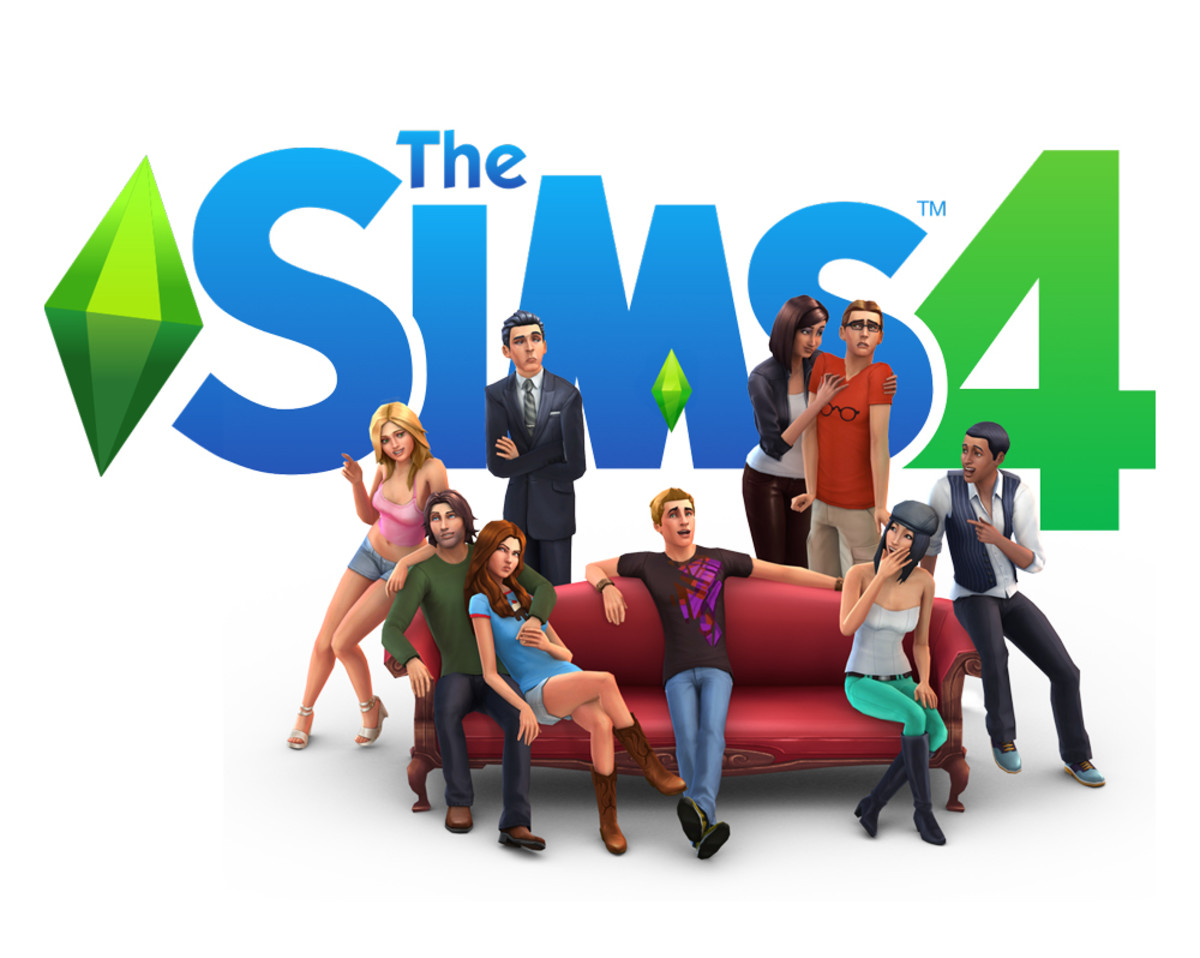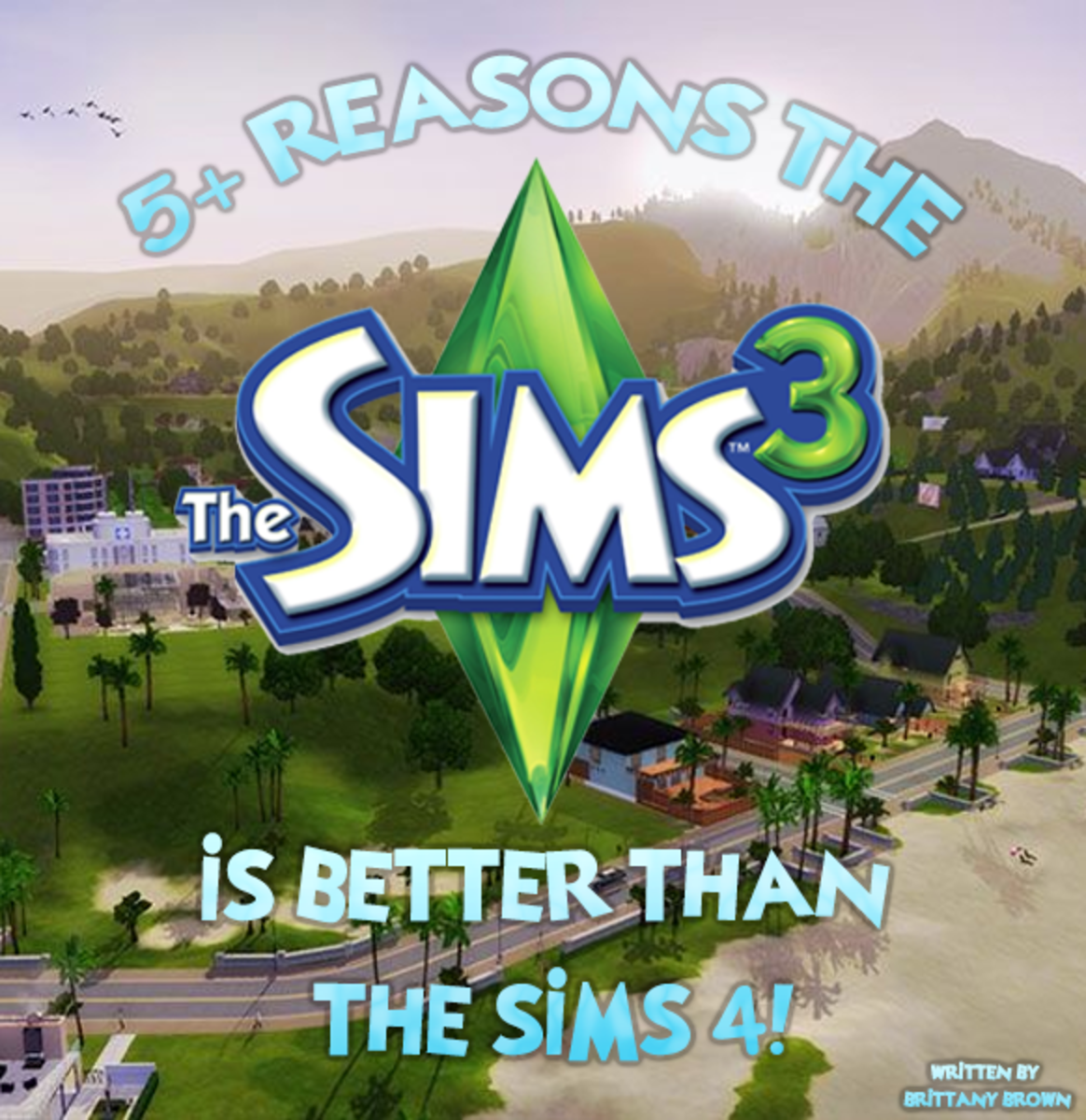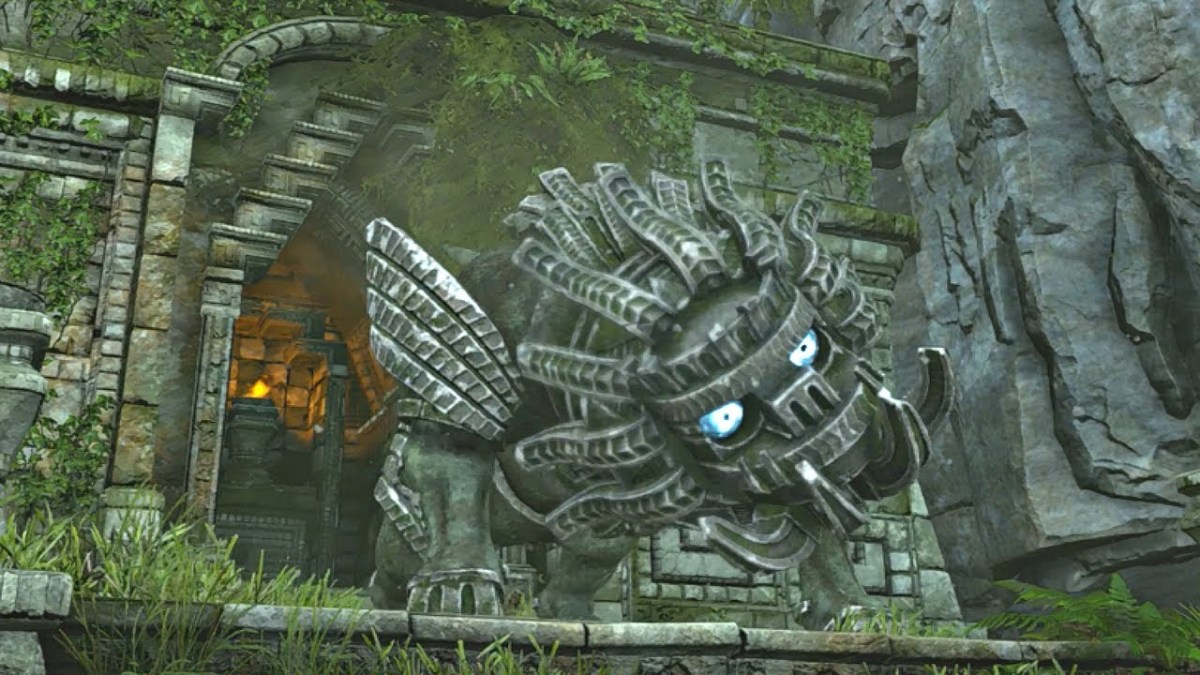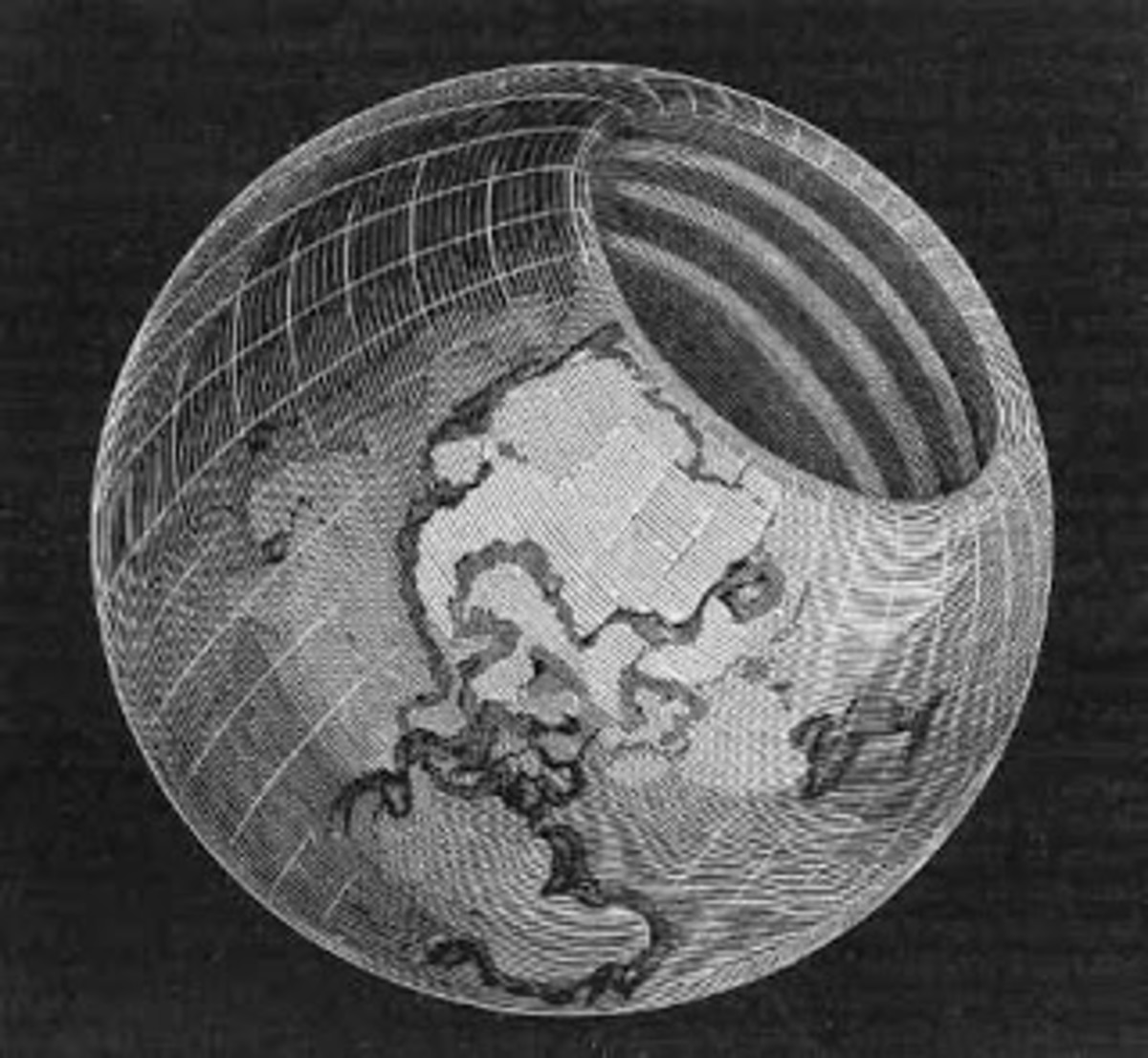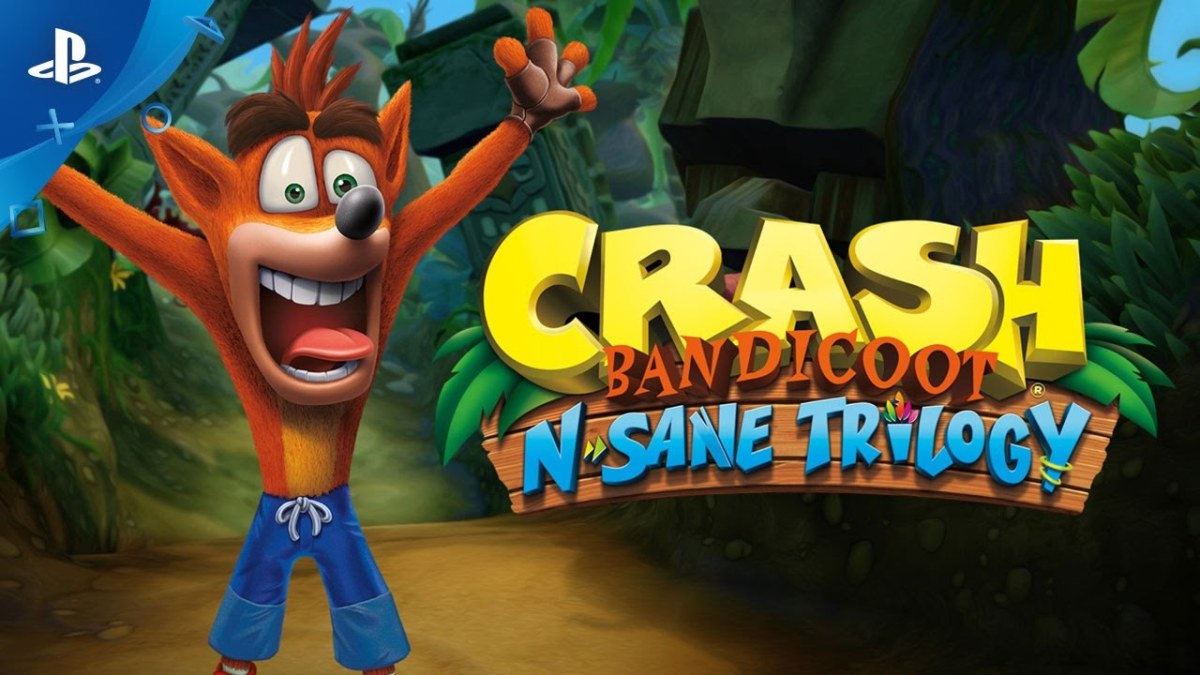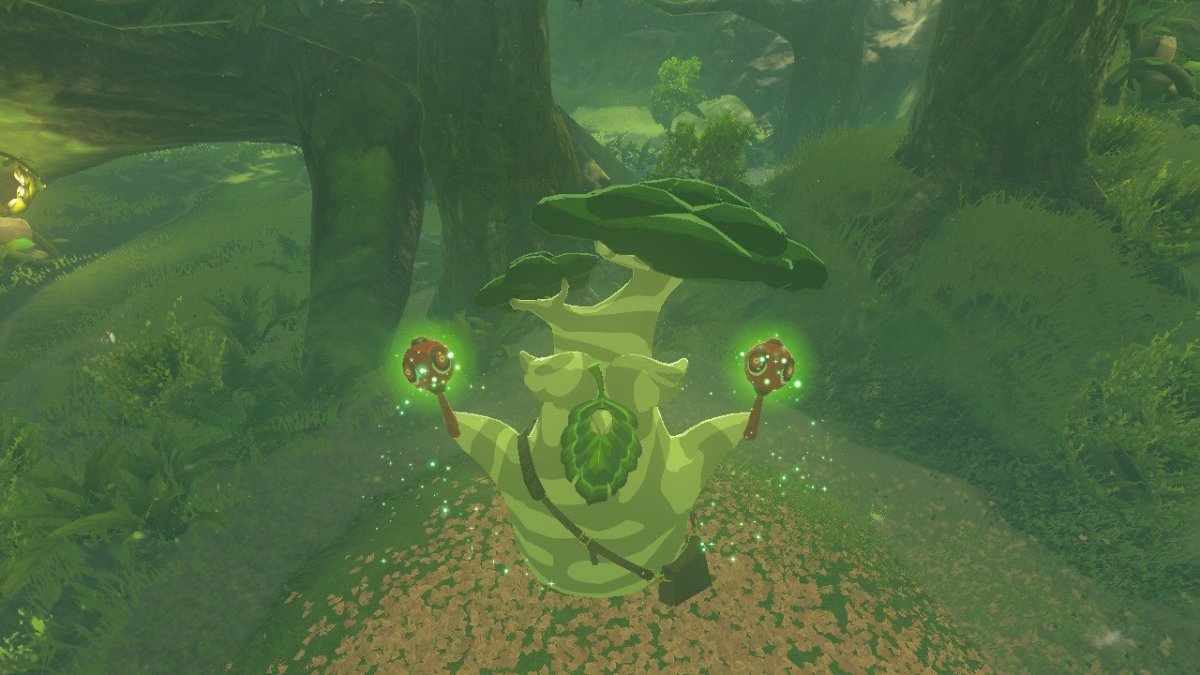Middle-Earth, Shadow of Mordor: A Review
Middle-Earth: Shadow of Mordor was on September 30th 2014 in North America and October 3rd 2014 for Windows, Xbox One (reviewed) and Playstation 4. An Xbox 360 and Playstation 3 version will release on November 18th in North America and November 21st in Europe.
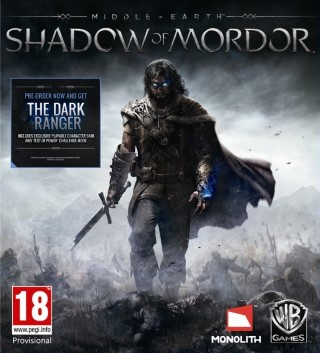
About the Author
John Roberts is a video game critic on HubPages and YouTube, reviewing that he sees worthy of the former, whilst reviewing Playstation One games on the latter channel. When he isn't complaining about Time Crisis being unplayable on flat screen televisions, he likes to snooze in a rocking chair overlooking his demonic empire of Johnbonnia.
The last time Roberts was sent to slay orcs surrounding a dark gate, both the forces of good and evil collided and were bombarded by plague. Still to this day he swears vengeance against the undead, and yearns for the head of Saurfang the Younger.
Uruk-Hai Expectations
Middle-Earth: Shadow of Mordor is a strange beast. Yes, at first glance it looks and acts similar to popular open world franchise Assassin’s Creed, and its combat has the same feel as the remarkable fist-fighting action of the Batman: Arkham games, which too is compared to Ubisoft’s money printing machine. Normally I’d dismiss this kind of game as another attempt at capitalising on the AC bubble, a bubble which is a great blueprint for any third person open world title to model itself after, but Monolith has created something that stands up to its competition and bellows a thunderous roar in its face.
Bear in mind I’m not just talking about the gameplay; the story is really interesting and it surprises me few developers have embraced the full potential of JRR Tolkien’s fantasy universe. Make no mistake, Shadow of Mordor is not “another LOTR movie tie-in game” but an idea that allows us to explore Middle Earth more than the movies and novels do. This game lets us play in between the events of The Hobbit and Lord of the Rings, and while I didn’t feel as though I was part of the movies (I only read The Hobbit up to where Bilbo meets Gollum), I was easily immersed in the world that was Middle-Earth and discovered far more about it playing just a few hours than I did the entire films, including the Hobbit film trilogy.
The player avatar is Talion, a ranger of Gondor whose family has been killed by the vast armies of Sauron. While he vows for vengeance against the Uruk horde, he knows well enough that he won’t stand a chance without backup. Denied death during after a blood sacrifice, he’s bound to a Wraith (whose name I’ll withhold to prevent spoilers) who too has suffered great tragedy. Together they have to gather allies and strength to avenge themselves, as well as save Middle-Earth from total domination.
When it comes to Shadow’s story, I can’t give complaints without the positives somehow bleeding in. The campaign consists of 20 missions, clocking in at 10 hours if you do minimal side content, and yet for such little time it’s so hard to pace myself. I always want to know what happens next and while there’s never a boring moment in the cutscenes, I feel as though it cuts out lots of fluff that could help me understand Mordor better. You know just about enough of Talion’s family, the leader of the Outcasts and the Queen of the Shores to grasp who they are, but not anything surrounding them. It’s sad that Monolith fell prey to Bungie’s storytelling methods in Destiny, hiding big names in small notes found in the pause menu. But like the aforementioned FPS, the stuff you find here is fascinating and you’ll get a codex entry for everything you do. The plantlife, the beasts, Uruk society and other tidbits of information breathe so much life into a world plagued with obscurity and lack of exploration. Shadow of Mordor might not do its characters much justice, but when it comes to fleshing out the world this is as close to Tolkien as you’ll ever get.
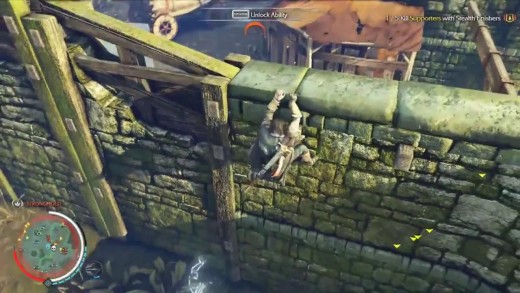
My experience with open world games has never been quite as hostile as Monolith’s adaptation of the Tolkien universe; I’m used to having access to a wide array of vehicles; I’m almost always in a city surrounding by people who can’t shine a candle to me; it feels like the world is my oyster. Middle-Earth is the complete opposite, more akin to the Batman Arkham games than most others. The entire land has been overrun by the Uruk (in between Orcs and Uruk-Hai in terms of strength), and because there’s a high bounty on your head they won’t take your gallivanting lightly. This isn’t The Saboteur where you can kill all the civilians you want but tapping a Nazi structure gets the alarm bells going; there are no civilians outside of quests, and even then Talion does most of the work himself. The friendliest NPCs are the helpless slaves which can be liberated and the Uruk you choose to brand later on. At first it was daunting but with enough power and confidence you’ll be able to make Mordor your playground.
As Talion was the captain of the Gondorian Rangers you’d expect him to be a competent fighter, but very early in the game I found him to be a sluggish, bumbling oaf who I’m surprised didn’t need a tutorial to tell him how to tie his shoelaces. When in combat, Talion uses a longsword to deal with the Uruk swarms, who will continuously rally more allies and set off alarms as the fight draws on. He can leap over enemies, counter their attacks, parry (to little effect) and smack them right on the kisser to stun them. Building up consecutive combos for devastating hit counters is vital though, so it’s no good just hacking and slashing at foes like you’re an NES villain otherwise you will die. While the Uruk can be killed it’s best that you keep racking up hits so you can execute them or use your Wraith powers for crowd control. Don’t think that you can soak up a lot of hits either; it only takes around three or four before you fall to your knees, relying on a quick time event to lift yourself up and do damage – even then you’re limited to two chances before your head is removed from your shoulders.
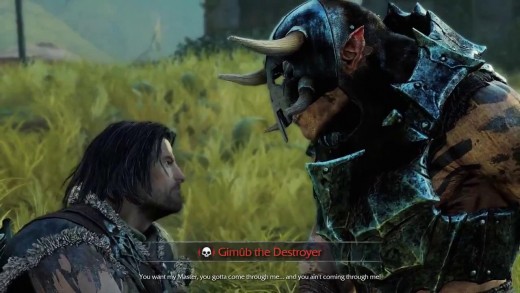
When using marksmanship to deal with foes and the environment Talion transforms seamlessly into the Wraith, able to use a bow to dispatch of enemies quickly, pin them to the ground or shoot objects that can aid in the fight. I found myself using archery a lot more than I thought I would, destroying Morgai fly nests to scatter foes, shooting campfires to explode resting Uruks or just getting headshots to clear a captain’s followers. Even in the middle of a fight I might use some focus and Elf Shot to kill enemies closest to me as I make a break for it. Entering the spirit realm allows you to detect enemies in the distance, find mission objectives and resources, as well as herbs or artefacts as you’re on the hunt for 100% completion. Again, I was surprised how many times I’d played as the Wraith to detect guards, patrols, items in the world and identify captains. It might be a feature that blatantly copies Assassin’s Creed, but here I find it serves its purpose a lot better, and to me that’s what matters most.
With classy kills and mission successes, you can progress Talion in multiple ways such as through abilities and passive upgrades. Experience can be used to upgrade his Wraith abilities in that respective talent tree, whereas completing Captain missions and slaying them can unlock ranger ability upgrades. Both are key for survival and though they may seem few at first, they will take a lot of time and activity to unlock. Better yet they’re useful, and you’ll be more than willing to do side content for the currency of Miriam, which will unlock weapon rune slots and passive upgrades for your health, focus and ammunition. My only real issue with the progression system is that some abilities can’t be unlocked until much later in the story. Around 13 out of 20 missions through the game I unlocked the Brand ability, which allows me to control Captains and make better use of the Nemesis system. It was something of a worry that I only had seven more missions to make use of this ability, but taking the time to do the side content allowed me to have a blast with it.
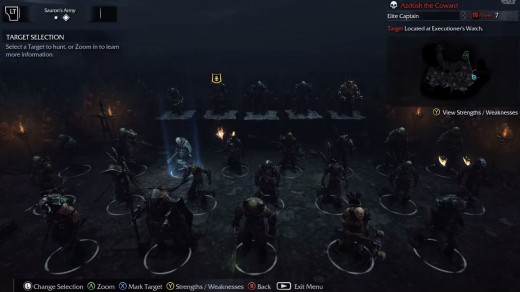
The ranger of Gondor is a capable fighter but having stealth on his side makes the early game all the more bearable. Luring archers to come to the edge of their tower before throwing them off it with a knife in their guts is only the beginning, and as you play on you’ll be stringing together silent kills and scattering enemies before they know they’re being chewed on by caragors. Sabotage is not only a convenience, but each object in the environment that can be somehow interacted has different, useful effects. Going back to the Saboteur once more, Sean Devlin could destroy Nazi propaganda speakers but they had no impact on the world besides bagging him some contraband. Instead if he takes out those towers, he can prevent snipers from covering a large area which can drastically affect his escape. Middle-Earth makes sure that everything from crumbling walls to violently potent grog can be used to injure, scatter and kill your enemies. This adds so much strategy to a somewhat brainless button masher, and the preparation that goes into your sabotage doesn’t go unrewarded. If Watch Dogs didn’t exist, this game would be the king of sabotage. Instead, they compare rather nicely.
It’s these things alone that already make Shadow of Mordor a competent addition to the open world genre, but Monolith didn’t stop there. They introduced a dynamic strategy tool called the Nemesis system, possibly the one thing that made people turn their heads to this title. And you know what? It’s one of the few times I can recall a developer delivering on high hopes this year. With the Nemesis screen, players can see the strongest Uruks in two islands’ societies, and who the captains are controlled by. These captains will fight amongst each other and gain power for each successful event, be it slaying powerful beasts, ambushing one another, rallying rival Uruks to join their cause or just getting pissed. While they don’t necessarily do this in real time, you can go to every Uruk captain available through the Nemesis system in the open world…. All of which are named, modelled and have unique personalities.
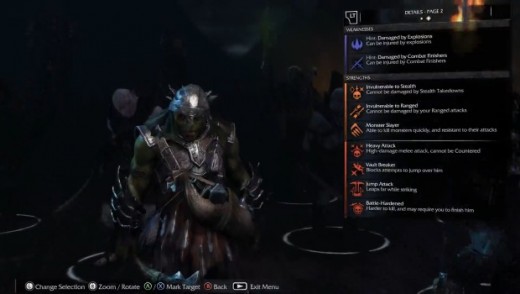
When Talion dies the Nemesis system is moulded, and it’s not uncommon to hear players say they died deliberately so they could get their controlled captains powered up without manual interaction. In fact, it’s worth dying just to see how enemy Uruks fight amongst each other and who dares take the mantle of Warchief. When an Uruk kills Talion (and don’t you worry, this’ll happen a lot), they’ll be promoted to Captain, as well as increase in power. Despite many Uruks evolving as I resurrected at a forge tower, I couldn’t help but thirst for the beast that mortally wounded me. Rather than be frustrated, I was more maniacal in my quest for vengeance than the story ever made me. Another great thing is when you or your target Captain flees, as they’ll remember what you did the last time. Did you throw them through a fire? Next time you meet they’ll be burnt and make a threat about burning you. Have you died to them twice in a row? They’ll make a point about making sure you’re dead this time ‘round. All of this was promised and I can’t fully express how great it is to see this system as fleshed out as it was in the original gameplay videos.
Killing Captains is only half the battle though; what about controlling them? This isn’t unlocked until later in the story, but the ability to Brand adds a whole new dimension to the gameplay. Branding Uruks allows you to gather intel on fellow Captains, become bodyguards for Warchiefs should you choose to challenge them and take on their own missions to raise their power. Rather than killing Uruks during executions, ambushes and feasts, you’ll instead assist your branded warrior so they grow in power and can rise to the rank of Warchief. You might be a one man army, but it doesn’t hurt to have an Uruk empire at your beck and call.
Shadow of Mordor has very little else to offer, however. The side content involves different challenges, mostly timed, which will “build the legacy” of your sword, bow and dagger. These challenges of different variety will no doubt appeal to Arkham fans, but the only two I’m interested in are those revolving around the bow and dagger. I’m not much of a fighter, so challenges involving [x] amount of kills in open combat in [y] seconds will only lead to boredom. There’s content for explorers too, such as building up runes for a wall (similar to the entrance of the Mines of Moria) and artefacts, both requiring you to be in Wraith form to discover them. The artefacts are especially intriguing, and I spent many hours going from one to the other before reading their descriptions and absorbing the lore from the audiobook-esque memories. Did you know that the Morbai flies are suspected to be tiny eyes of Sauron, possessed to watch the Uruks? Or that Pipeweed flowers made for a potent narcotic? Those scraps of information and segments of anecdotes really help to give Middle-Earth more depth than we see in the movies or books, and the game proves in another way that we can have new lore rather than adapting the old in different ways. But if it’s story missions and story missions only you’re after, Shadow of Mordor will only see to instant satisfaction.
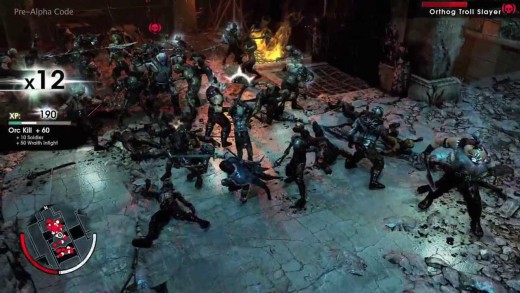
Both the game’s art style and visual fidelity impressed me on the Xbox One version of the game, and I had further reason to enjoy the graphics with each new Captain I uncovered through the Nemesis system. The character models I believe deserve the most credit, as do their designers, for the Uruk armour, weapons and other miscellaneous pieces of kit crudely strapped to their persons is stunning. The game’s environments are mostly hilly and muddy with zero sight of winter tundras, volcanic wastes or dense forests which I’m familiar with in Tolkien’s fantasy universe. As I don’t know what Middle-Earth really should look like, I’m at least glad it looks like a once peaceful land torn apart and built anew by Uruk.
Monolith’s sound designers also deserve applaud for their astounding work with the soundtrack and especially the voices. While Cockney accents for Orcs are commonplace in many worlds including Warhammer and its futuristic counterpart, the amount of well-acted and well written lines make it more than tolerable. It’s always a joy to go face to face with an Uruk, being called a “man swine” and grinning as he reminisces about the time he stuck me with a poisoned halberd. It’s a shame that the music is a rarity outside of combat, because the war drums and horns fortify one’s immersion in Uruk ruled Middle-Earth.
Final Verdict: Great
Conclusion
It’s hard not to recommend Shadow of Mordor with its excellent combat and stealth design, exemplary use of the license and of course its astounding Nemesis system. Not only does Monolith and Warner Brothers’ open world titan deliver, it goes beyond already high expectations and deserves its place amongst the classics this year. The only thing that prevents it being a five star recommendation is its short campaign, criminally underdeveloped characters and average side-challenges along the way. Even if you’re not a fan of this game’s most common comparisons, I’d recommend you give it a try nonetheless. Failing that, I’d also recommend similar titles like Viking: Battle for Asgard, The Saboteur and Watch Dogs. If this isn't a candidate for Game of the Year, I'd hate to see what is.
Thanks for reading, have a pleasant day and don’t forget to follow on Twitter for more Greasy Gaming banter!


